

Table of Contents
When you consider branding, you might immediately say a logo or perhaps a slogan. Think again. That’s the universal understanding that streamlines a difficult-to-grasp idea that plays an indispensable part in any brand’s success.
Most entrepreneurs and marketers fall victim to thinking branding is simply coming up with an attention-grabbing logo or a memorable tagline. Actually, these factors are certainly paramount; they amount to a percentage of what truly is involved with branding.
Branding is not just a logo; it is creating an experience that your audience will connect with. Branding is also about the character of your business, why your audience trusts you, and the emotional bonds that you create with your customers. Good branding creates the way your audience thinks about your business and what drives their decision-making.
Fundamentally, branding is about creating an enduring identity that sets your company apart from others. It’s about communicating your story in a manner that evokes and draws out your audience so they can connect with your mission and values.
Throughout this blog, we will explore the realities of branding, debunk popular myths, and give practical tips on how to create a brand that not just stands out but also leaves a lasting impact.
“Brand is just a perception, and perception will match reality over time.”― Elon Musk
Common Misconception: Branding = Logo + Tagline
Most businesses are under the illusion that q well-designed logo and slogan will be enough to define their brand. This may be a limited view of what branding is all about. While visual elements like logos and slogans are very important, they are just the tip of the iceberg in the sea of branding.
The Depth of Branding
Branding extends well beyond these visual cues; it’s the complete experience customers have with a company. It encompasses:
- Brand Voice: Tone and voice of communications, formal or casual, humorous or authoritative.
- Customer Experience: Each interaction the customer has with your company forms their impression of your brand, from customer service to product quality.
- Core Values: The beliefs that inform your business decisions and actions, and resonate with your target market.
Case Study: How Brands Create Experiences Beyond Visuals
Branding is about much more than just logos and taglines; it encompasses the entire experience a customer has with a business.
Here, we explore how brands like Zomato, Nike, Amul, Lenskart, Jaguar, Wok-Tok, Coca Cola, and Pepsi create rich brand experiences that resonate with consumer on multiple levels.
1. Zomato: It’s Not Just Food Delivery
Zomato has revolutionized the food delivery game by building a brand identity with its legendary logo. The business doesn’t merely deliver food; it delivers an experience—one that is fun, interactive, and highly engaging with their fans.
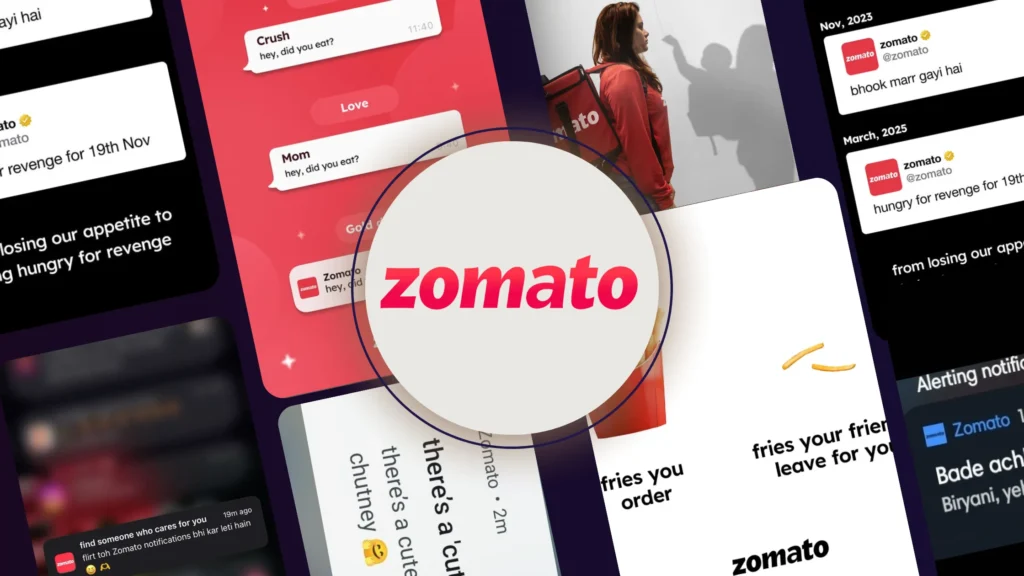
One of the most amazing things about Zomato’s branding is that it constantly evolves yet retains its fundamental essence. This can be seen in Zomato’s new identity as Eternal, where the brand incorporates an ageless appeal without being stale or out of touch with consumers.
Zomato’s branding involves:
- Brand Identity: From app interface to packaging, Zomato maintains a consistent visual presence, which strengthens trust and recognition.
- Storytelling: The company not only situates itself as a food delivering company, It also becomes that buddy who understands customers’ appetites and offers wonderful moments.
- Engagement: By providing humorous social media exchanges and innovative marketing programs, Zomato creates such an emotional connect with its fans that it turns out to be greater than that of its daily life.
2. Nike: Inspiring a Lifestyle of Empowerment
Nike is a perfect example of branding selling a lifestyle, rather than products. The brand’s strategy revolves around:
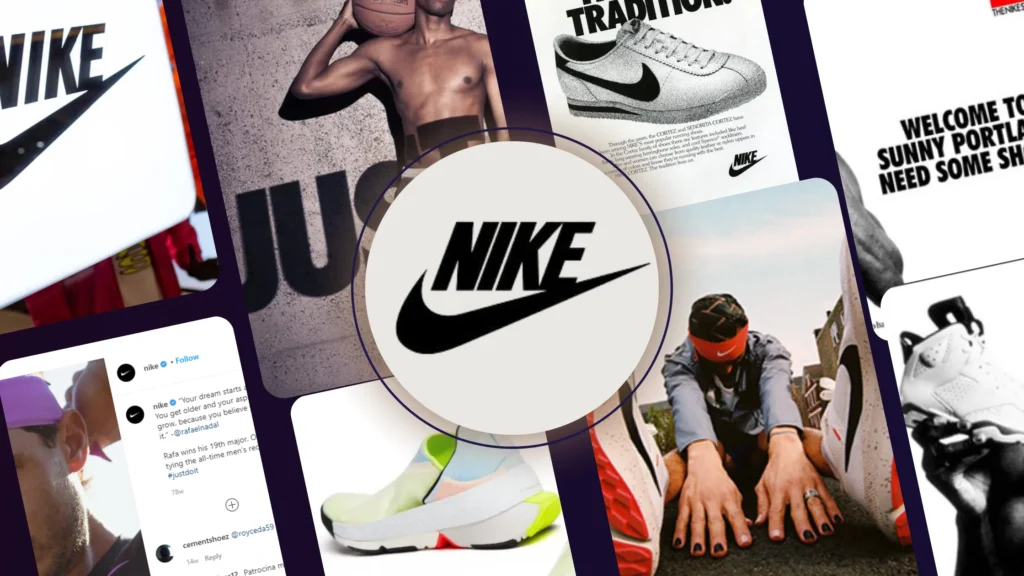
- Aspirational Messaging: Nike’s commercials invite individuals to push beyond their limits and be the best they can be, targeting the consumers’ dreams.
- Community Engagement: Their commercial programs, like the Nike Run Club, the brand fosters a feeling of belongingness among athletes and fitness enthusiasts.
- Cultural Relevance: Nike also connects their brand with social causes, not just limited to a sports apparel firm but also an agent of empowerment and transformation.
3. Amul: Touching the Heart
Amul has been able to form an emotional connection with customers through its brand initiatives:
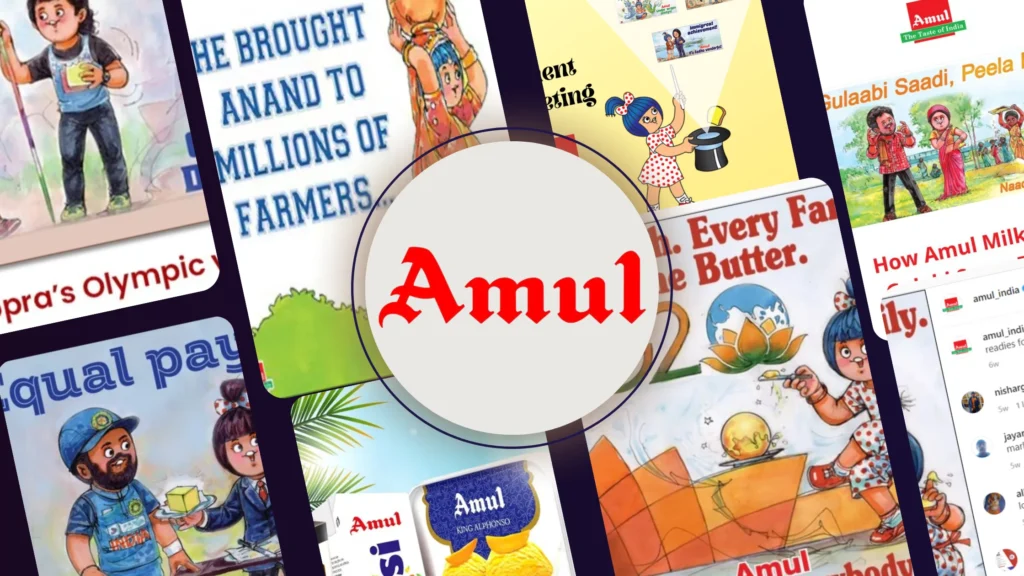
- Cultural Mascot: Amul Girl is a cultural icon in India and makes comments on events of the day, something which connects with the common consumers.
- Patriotic Positioning: The slogan “The Taste of India” inspires authenticity and patriotic feelings, fostering loyalty among customers.
- Humor and Relatability: Amul’s advertisements frequently use humor, which makes the brand relatable and likable to consumers.
4. Lenskart: Different Eyewear
Lenskart has redefined the perspective of eyewear by highlighting ease of use and style:
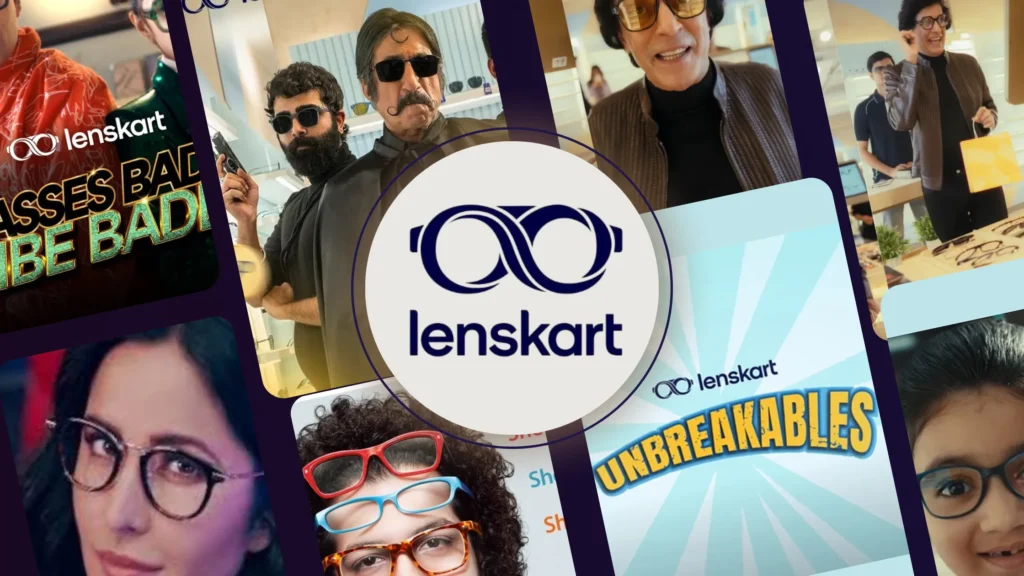
- Omnichannel Experience: With the fusion of online stores and physical locations, Lenskart delivers personalized services like eye checkups and frame adjustments.
- Empowerment Through Style: The brand turns eyewear into a fashion statement rather than a necessary object, allowing customers to express themselves.
- Community Engagement: Lenskart interacts with customers on social media, turning them into brand ambassadors through user-generated content campaigns.
5. Jaguar: More Than Cars, A Brand Built on Aspirations
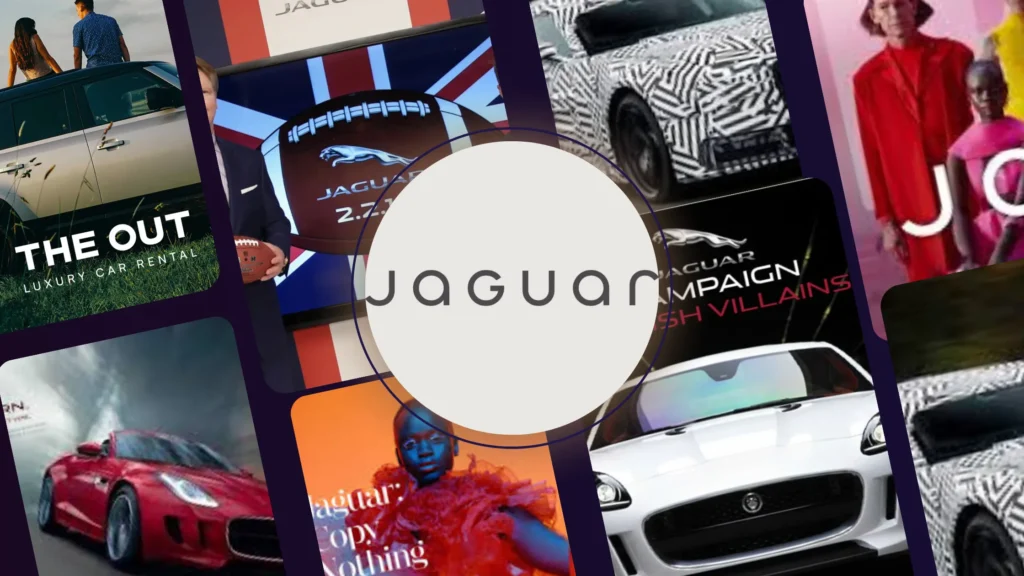
Jaguar’s recent rebranding process demonstrates how a luxury vehicle manufacturer can transition from idea—focused storytelling to one that appeals to today’s consumers’ ambitions and sentiments.
One such example of this shift is demonstrated in Jaguar’s Rebranding, where the company revitalizes its image with a new identity while holding on to its rich heritage of sophistication and innovation.
Jaguar’s brand strategy involves
- Cultural Provocation: Rather than simply selling vehicles, Jaguar is a leader in the thinking surrounding mobility and luxury design, challenging people to think about the future of luxury living.
- Human Playfulness: By adding personality and emotional depth into its communications, Jaguar connects with customers’ dreams and lifestyles, as opposed to simply highlighting vehicle specifications.
Key Elements of a Strong Brand Identity:
- Brand Storytelling: Your “Why” is greater than your products. Telling the story of your mission and values evokes feelings and enables customers to relate to your brand.
- Consistency: The same message, tone, and experience all around builds trust and familiarity, making your brand relatable and trustworthy.
- Emotional Brand: Customers remember how they feel about a brand through inspiring ads, and emotions generate loyalty.
- Customer Experience: It is all about each and every touchpoint counting. Be it the support personnel or the delivery of a product, every single touch point leaves an impression regarding your brand.
How to build a Strong Brand Identity?
Building a timeless brand is all about working on meaningful and long-term strategies that are authentic to your true self. Here are some methods on how you can do this:
- Define your Purpose and Values: A lasting brand is founded upon a solid purpose and good values. These form the base for your brand and allow you to resonate with your audience deeply.
For instance, Patagonia is the brand that can relate its purpose—ecological sustainability—to what its customers enjoy. - Value Relationships Over Transactions: Building long-lasting relationships is critical to competitiveness. Engage with your customers through learning their needs and building valuable experiences.
Long-term trust and loyalty are fostered through loyalty programs, personalized messages, and interactions. - Provide Consistent Experiences: Consistency throughout all touchpoints strengthens your brand identity. From logo to customer support, every experience must be aligned with your messaging and values.
Coca-Cola’s application of its red-and-white color scheme and emotional storytelling is an excellent case of consistency in practice. - Transform While Staying True to Your Brand Identity: Timeless brands survive with changes in culture without sacrificing their essence.
Apple, for instance, evolves with changes in technology through its fundamental philosophy of innovation and simplicity.
The key is in merging change with continuity, and only then can the brand stay current for generations to come.
This video is embedded for educational purposes. All rights belong to the original creator, The Futur
Download Your Ultimate Branding Tools
Cheatsheet
For a quick reference guide on selecting the right Branding tools, download the
ultimate cheat sheet given below:
Conclusion:
Evolution, while remaining faithful to your brand DNA, is key to long-term relevance in the current competitive environment.
Brands that focus on incremental innovation, continuously interact with their audience, leverage data-driven insights, and maintain consistency across all touchpoints are more likely to successfully go through the evolution process.
In doing so, they can adopt innovation and expansion without compromising the fundamental values that underpin their identity, ultimately building enduring relationships with consumers.
FAQs
How can I make my brand’s purpose truly stand out?
Your purpose should reflect the “why” behind your brand. Focus on what inspires you and how your values align with your audience’s needs to create a compelling story.
How do I know when it’s time for my brand to evolve?
If your audience’s needs are changing, engagement is dropping, or competitors are gaining ground, it’s time to adapt while staying true to your core values.
Why should I prioritize relationships over quick sales?
Because relationships build loyalty! When customers feel valued and connected to your brand, they’re more likely to return and recommend you to others.
What’s the secret to delivering a consistent brand experience?
Consistency is all about aligning every interaction—from social media posts to customer service—with your brand’s identity. Clear guidelines make this easier to achieve.

Leave a Reply